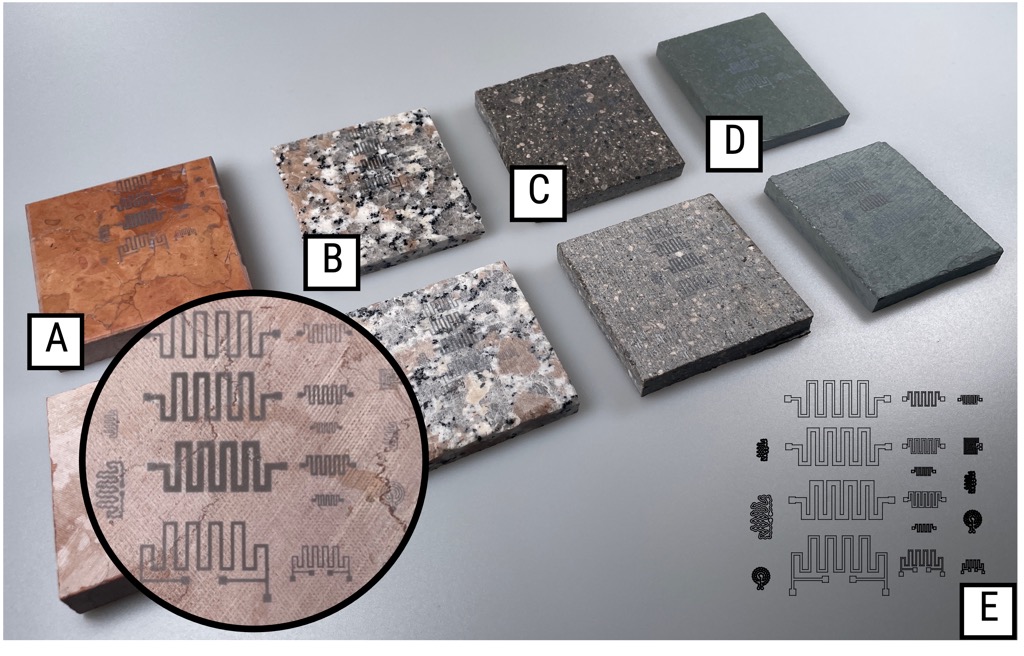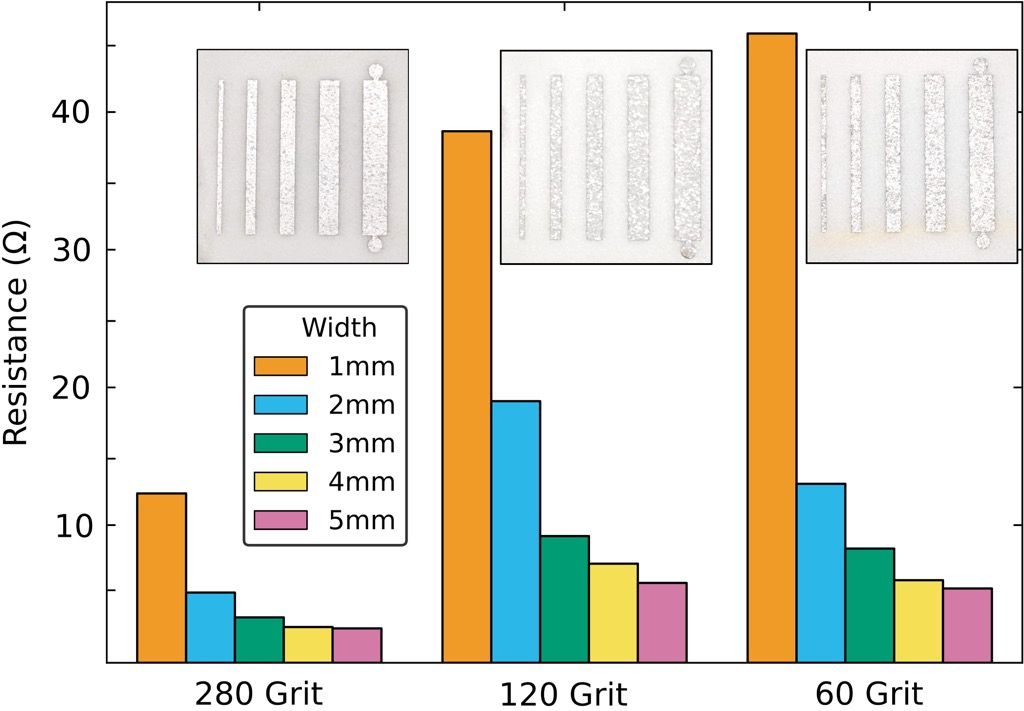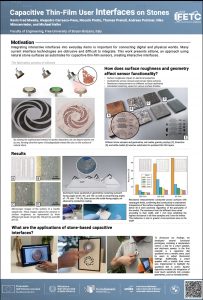Integrating interactive interfaces into everyday objects is essential for bridging the gap between the digital and physical worlds. However, many existing interface technologies are bulky and challenging to seamlessly integrate into the environment. This work introduces eStone, an approach that utilizes natural stone surfaces as substrates for capacitive thin-film sensors, turning them into interactive interfaces. Metallic thin films, such as 200 nm-thick aluminum, were sputter-deposited and structured on various stones, including marble, granite, porphyry, and limestone, to create conductive patterns that enable the formation of capacitive sensors.

The nanometer-scale thickness of these layers maintains the stone’s natural appearance and texture while making them functional and durable capacitive sensors. Coupled with through-hole contacting vias and customized conventional readout electronics, eStone demonstrates high performance when used as a capacitive controller for tasks such as adjusting a loudspeaker’s volume or a thermostat’s temperature.
The fabrication process of eStones
By utilizing the sophisticated method of sputter deposition, we can deposit atoms one by one, forming ultra-thin layers of biodegradable metals like zinc on the surface of natural stone. To define the lateral structures of the coated thin films, single-use sticky vinyl shadow masks were employed.

These masks were designed using CAD software and cut automatically with a vinyl cutter, allowing for the structuring of surface patterns on both flat and curved substrates. Next, conductive layers were deposited by sputtering 200 nm of aluminium (chosen for its excellent conductivity properties) from a metallic target in a pure argon atmosphere using a Kenosistec KS500C sputter tool. Finally, the vinyl shadow masks were removed.
Results
Different stone samples and geometries, red marble, granite, porphyry, limestone, and white marble used as substrates for sputtered thin film layers. Microscopic images of the surface of a marble sample. These images capture the variance in surface roughness, as represented by three different grit levels: 60 grit, 120 grit, and 280 grit.

How does surface roughness and geometry affect sensor functionality?
- Surface roughness impact on electrical properties
- Conductivity across concave and convex stone surfaces
- Resistance measurements on different surface treatments
- Calculated resistivity values for various surface finishes
What are the applications of stone-based capacitive interfaces?
To showcase our findings, we developed several functional prototypes, including a temperature sensor, a dial for a smart speaker, and electronic jewelry. In the first example is a capacitive dial sputtered onto a marble stone, used by users to adjust thermostat settings. Additionally, a smart speaker with a marble front cover was implemented to highlight the sputtered dial in action. Sputter deposition enables the integration of local touch sensitivity into complex geometries, such as toroidal jewelry.

Kevin Fred Mwaita, Alejandro Carrasco-Pena, Niccolò Pretto, Thomas Preindl, Andreas Pointner, Niko Münzenrieder, and Michael Haller. 2024. Capacitive Thin-Film User Interfaces on Stones (IFETC ’24).
Team
Kevin Fred Mwaita, Alejandro Carrasco-Pena, Niccolò Pretto, Thomas Preindl, Andreas Pointner, Niko Münzenrieder, and Michael Haller